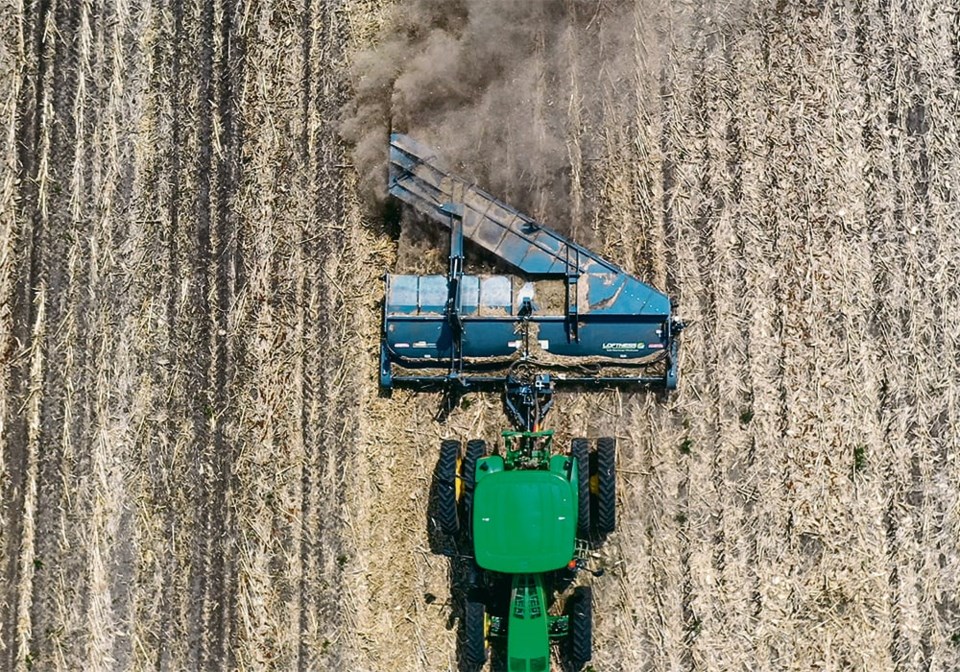WESTERN PRODUCER — Efficiency in the field is important when dealing with cantankerous BT corn stover and other stubborn crop residues.
To meet that challenge, Loftness is introducing a new side discharge windrower/shredder.
The Air Delivery Side Discharge Windrower is not a re-named copy of an earlier model, but a new shredder that’s fresh off the Loftness CAD machine. It’s so new that only two complete units exist.
The first prototype has been in field trials for months. Shredder number two is in the shop where engineers can fine-tune the design based on what they’re learning from shredder number one.
Loftness had built a centre-delivery windrower for years. But farmers wanted bigger windrows to increase efficiency.
Side delivery allowed operators to make adjacent runs to put two windrows together. So Loftness added a 20-foot side delivery. Some of these windrows are up to five feet high, but the belt was a problem in high moisture conditions.
The answer was air delivery to the side.
With the new Air Delivery Side Discharge Windrower, wind provides the drive to move material. It’s never touched by mechanical movers.
“We’ve been beating up the prototype, putting it through the worst possible conditions we can find,” says Loftness consultant Dave Nelson.
He says the new Windrower uses engineering features unique to Loftness. The curved tunnel design, in conjunction with hard-surface cupped knives, causes the implement to produce the optimal particle size for baling corn fodder and other tough residue.
Nelson says the tunnel and shroud configuration maximizes airflow, leaving a cleaner windrow compared to conventional rake implements which leave a dirty windrow. The rotor knife pattern increases suction, allowing the operator to run it higher to reduce the risk of hitting hidden objects.
The system does not use a fan. It’s a stalk shredder with a shield that blows stalks to the end of the shredder. Nelson says they’ve run it with less than 200 horsepower, and that works OK. But to get the speed and efficiency, it requires a full 200 horsepower, spinning the rotor at 1,750 rpm.
“We’re bringing it to farm shows right now, and the reaction has been favourable. Making best use of air movement is the key. All the engineering was in-house. The new side discharge design easily handles corn stalks from 200 bu. corn. It takes a lot of moving air to do that work.”
When it comes to market next year, the list price is expected to be between US$70,000 and US$80,000.
SASKTODAY.ca is Saskatchewan's home page. Bookmark us at this link.




